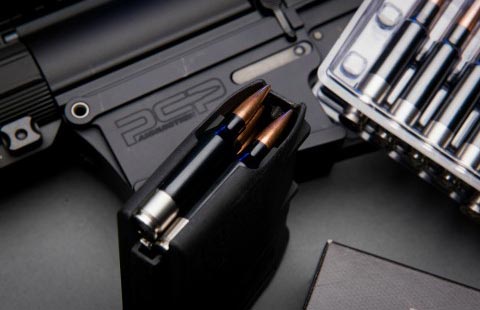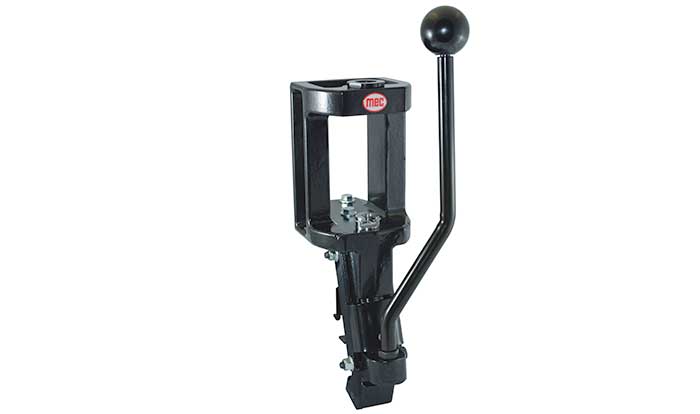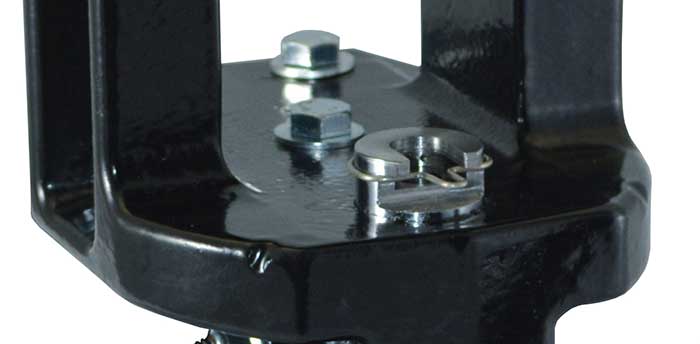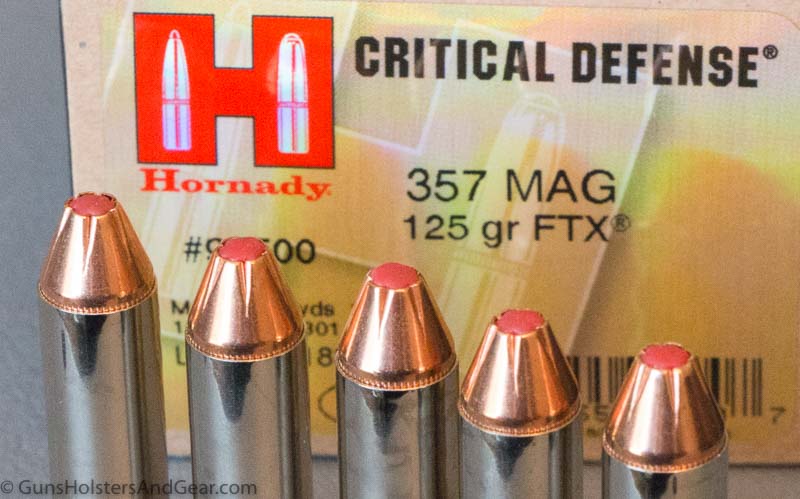Blackwater Ammunition is a company to watch. Today’s announcement is one example of why.
At SHOT Show 2020, Blackwater Ammunition announced a new caliber: the BWA 10×100.
The BWA 10×100 is a new design with some very modern technology, but it has roots that stretch back to World War I.
Before I get into the details, let me share that the initial load developed for this cartridge generates more than 11k ft-lbs of energy at the muzzle. Now, let’s talk about this new monster caliber.
Case
Case dimensions and properties are highly important aspects of cartridge design and load development.
The new 10×100 BWA cartridge has the same base diameter, rim thickness and primer pocket as a .50 BMG cartridge. Additionally, the overall length (OAL) of the 10×100 BWA is the same as the .50 BMG.
In other words, many, if not most, .50 BMG rifles can be converted to 10×100 BWA with a barrel change. The bolt, extractor and ejector all work the same with the 10×100 case.
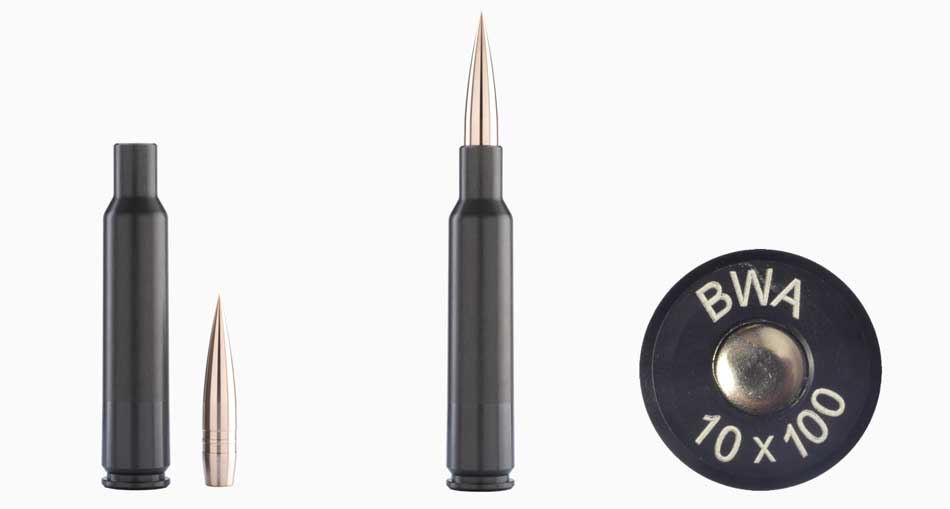
The 10×100 BWA case is 1mm longer than the .50 BMG. That may not seem like a lot, but according to the company, it allows up to 20% more powder to be loaded in each round. But, that may not be the only thing impacting case capacity.
Case technology also plays a role in this new cartridge.
Back in 2018, Blackwater Ammunition and its parent company, Precision Ballistic Manufacturing (PBM), introduced a new case technology that used a two-piece design. According to the company, the pieces were machined from solid metal. This is different than standard brass manufacturing that starts with a small “doughnut” of brass that is drawn (stretched) multiple times.
It is likely that the machined case is stronger than a drawn case. If so, the walls of the case could be thinner and still provide the same strength. Thinner walls would allow for a greater case capacity.
Bullet
As you might expect, the BWA 10×100 sends large, heavy projectiles downrange. How big? How heavy? How fast?
Right now, Blackwater Ammunition only released data on one load, and it is a doozy.
With a 420-grain monolithic Carobronze bullet, Blackwater Ammunition is able to get 3,500 fps at the muzzle. If my math is correct, that puts the muzzle energy at more than 11,400 ft-lbs. Much like the .50 BMG, you can take out lightly armored vehicles with those kinds of numbers.
[Note: If you’re not familiar with Carobronze, it is a dense, homogeneous copper alloy that is often used in the aerospace industry. It is said to offer very low friction and a high surface hardness – 90 points on the Brinell scale.]
In a head-to-head matchup, the .50 BMG can still generate more raw power. For example, the Federal American Eagle .50 BMG pushes a 660-grain bullet to more than 2,900 fps. That’s roughly 1,000 more ft-lbs of energy.
Keep in mind that energy doesn’t dictate accuracy, nor is an established .50 BMG load vs the first load of a completely new caliber a fair comparison. It is, however, an interesting starting point for the inevitable comparisons and discussions regarding these two rounds.
I’ve reached out to Blackwater Ammunition for additional information on the cases and cartridge. As I get additional information, I will share it here.
In the meantime, I hope you chime in with your thoughts in the comments below.



